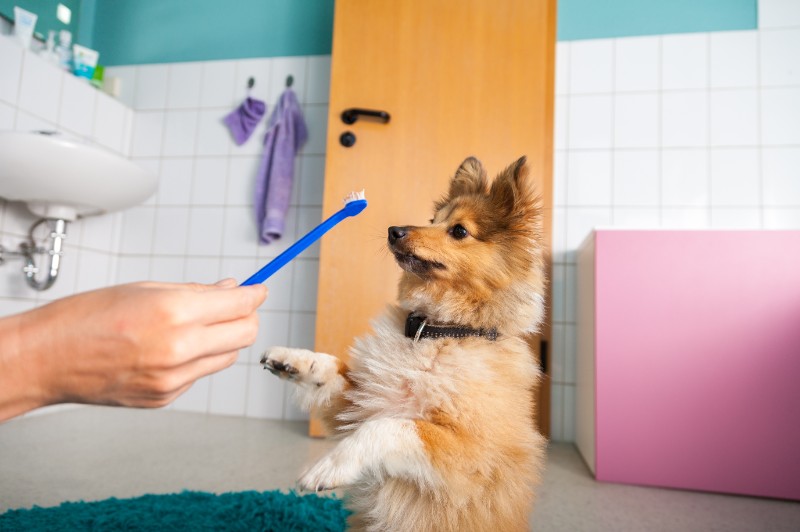
If your pet drives you away with her bad breath as you cuddle together on the sofa, you may be thinking it’s time for a dental chew. But bad breath can signify problems that are deeper than a simple Greenie can fix.
According to the American Veterinary Dental College, periodontal disease in pets is the most common clinical condition affecting them. By the time pets are 3 years of age, most of them have some form of dental disease. Common signs are bad breath, bleeding gums, and tooth loss. Disease of the internal organs can be a side effect.
But what exactly is periodontal disease, what causes it, and what do we do about it? As conscientious pet owners, we all want to do the very best we can for our animals. So, The Pet’s Place Animal Hospital is digging in to help you learn more.
Periodontal Disease in Pets
Periodontal disease starts when bacteria in the mouth form plaque that sticks to the teeth. Minerals in the saliva then cause the plaque to harden into tartar (dental calculus). Bacteria that cling to this calculus and plaque can then work their way under the gum line, causing gingivitis (inflammation of the gums). If gingivitis is not controlled, it can progress to periodontitis. In periodontitis, bacteria destroy the supporting structures of the tooth, including the soft tissues surrounding it, the root, and even the bone below.
In addition to disease in the oral cavity, bacteria are swallowed and can cause damage to the internal organs such as the heart, liver, and kidneys. Periodontal disease in pets can also cause problems with control and severity of diabetes. Sadly, there is some evidence that periodontal disease can cause shorter life spans in pets, as well.
Signs of Periodontal Disease in Pets
Aside from bad breath, it is sometimes difficult for many owners to notice signs of periodontal disease in their pets. This is one reason why it is so important to have regular dental exams (that happen as a part of the preventive care exam) so that we can find signs of dental disease early and treat small problems before they become advanced disease.
Signs to look for include:
Bad breath
Drooling
Red or bleeding gums (or red tinged drool)
Pawing at the mouth
Pain or sensitivity
Loss of interest in chew toys
Difficulty eating (sometimes looks like messy eating)
Chewing on one side of the mouth
It is rare that an animal will actually stop eating as a result of dental disease, but you may notice changes in their interest and comfort while eating.
Treating and Preventing Dental Disease in Pets
Although common, the good news is that dental disease in pets is largely preventable. Treatment and prevention of periodontal disease can add years to a pet’s life and is supported in the following ways:
Regular wellness exams, even for seemingly healthy pets
Professional dental cleanings under anesthesia
Digital x-rays
At home care
If you have any questions about your pet’s dental health, please don’t hesitate to give us a call. We’re ready to start your pet down the right path of good dental health with their dental exam. We look forward to seeing you soon!










